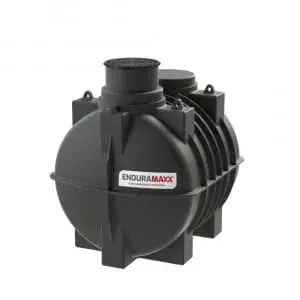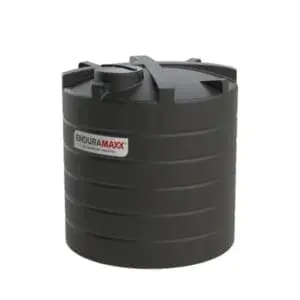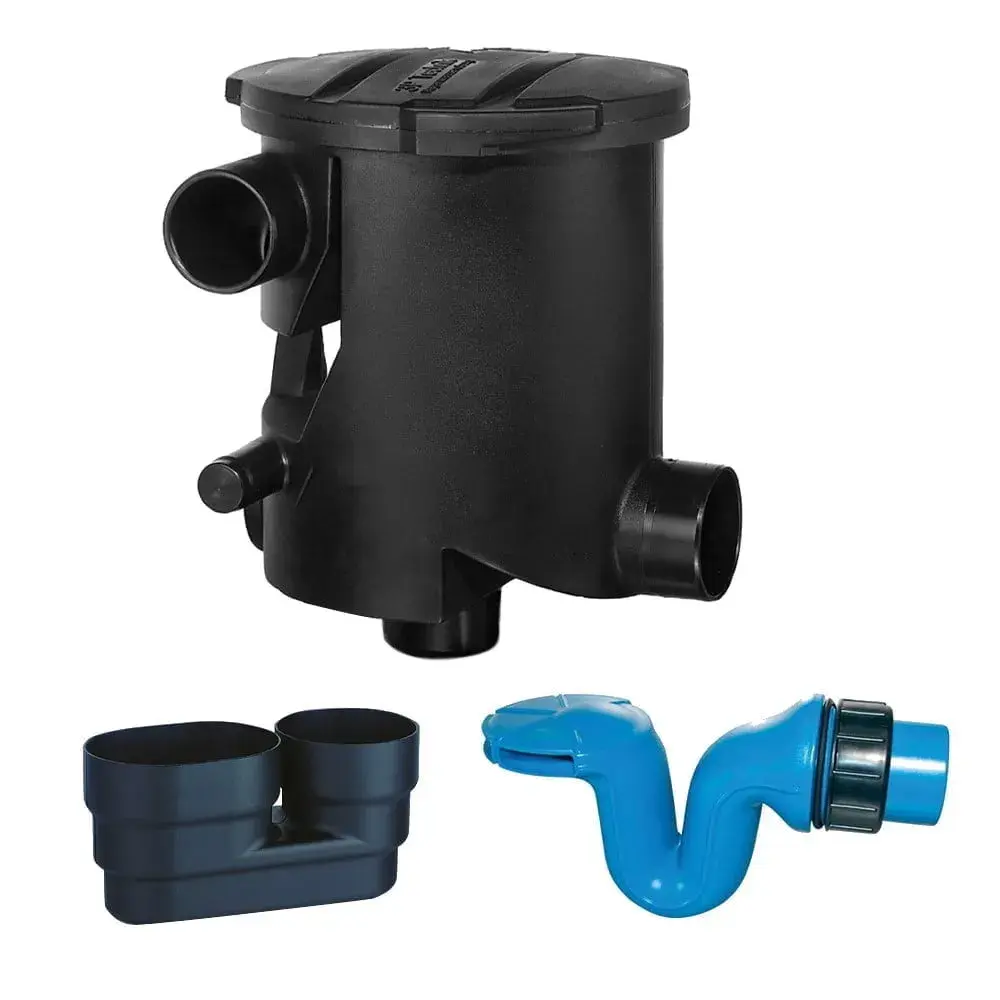There are many benefits of installing a rainwater harvesting system for gardens, there are many types of systems available for domestic and commercial installations and here we run over what types suit best. There are rainwater harvesting systems that are used domestically and commercially so depending on your needs, space available, and budget after reading this article you should be able to pick a system that’s perfect for you.
View our calculator to estimate how much rainwater you could save here
Types of rainwater harvesting systems:
Water Butts & Small Water Tanks
These are the most common and easy to install system is a water butt or small water tank. Water is collected from the roof, filtered, and fed straight into the tank. This water is mainly used for watering the garden and washing cars and sizes from 50 litres to 1,000 litres.
Rain Harvest Systems
These high capacity water tanks are good for farms, stables and riding schools that need a high volume of water such as washdown, pressure washing, irrigation, livestock watering and agricultural sprayers. There are many commercial and industrial applications where rain harvesting can be used for washing vehicles, stone cutting and toilets.
Direct Pumped (Submersible Pump)
These are the most common rain harvesting systems where a submersible direct-pumped system is used for domestic and small commercial installations. These systems pump directly to toilets cisterns and washing machines and only take from mains water when the tank is running low on rainwater. Generally, the water is filtered before entering the property.
These installations would use mainly use tanks from 1,000 Litre to 25,000 litres depending on the roof area and the volume of water used. Underground tanks can be used where above-ground space is a premium or to hide the tank. View our above ground and below ground rainwater tanks here
Direct Pumped (Suction Pump)
These systems have a pump and control system inside a building or enclosures rather than inside the water tank itself. This makes maintenance of the pump and filters easier rather than a system that has the pump inside the tank. These also use a mains water back up so as not to run dry.
Do I need to comply with the requirements of WRAS Category 5 on these installations – more details here
Indirect Gravity Systems
In this system, harvested water is pumped into a header tank using a pump, using gravity rather than a pump to supply water. These systems give a low-pressure water supply.
Indirect Pumped Systems
This system is like an indirect gravity system using a pump to pump water into the header tank. These systems use a booster pump to move the water through the system. booster pumps can be tailored to the requirements of the building.
Gravity Only Systems
Gravity only systems are very energy-efficient systems as they don’t use pumps to feed the water supply, however for domestic and commercial applications this type of system can struggle to supply the needs and pressures required for equipment, toilets and washing machines requiring the water.
The components of a rainwater harvesting system
Water Storage Tanks
These are available as above ground or underground from 50 litres to 30,000 litres. Tanks can be linked together where space is a restriction to increase the volume of stores. Fitted with bsp outlets and taps, these can be connected to pumps and water fitting easily.
Filters & Calmed Inlets
These filters clean the water as it comes off the roof taking our sediment, leaves, moss, and twigs. These rainwater filters are sized to the size roof you have. More details on these here.
Pumps
Direct systems need a pump to move and pressurise the water through the pipes. The size of the pump depends on the size of the tank and the applications of the system.
Mains Water Top-Up Tanks
Often tanks with a mains water top-up system come under the WRAS water regulations 1999.
Rainwater Harvesting Installer
Enduramaxx recommends that rainwater tanks are installed by a rainwater harvesting installer. For a rainwater system to function correctly filters need to be straight, pipework may need to be altered to get water to flow into the slower, and filters and pumps need to be sized to the application.
To find out more on the What are the different types of rainwater harvesting systems, water tank pricing and availability or your nearest rainwater harvesting installer to discuss a bespoke rainwater harvesting system, please get in touch today.
Posts By Topics
- Blog (303)
- Chemical Storage Tanks (118)
- Chemical Dosing Tanks (114)
- Chemical Tanks (114)
- Water Tanks (58)
- Rainwater Harvesting Tanks (43)
- Vertical Rainwater Tanks (31)
- Vertical Storage Tanks (31)
- Cone Bottom Tanks (19)
- Conical Cone Tanks (18)
- Rainwater Harvesting (17)
- Water Bowsers (15)
- Horizontal Tanks (14)
- Potable Water Tanks (13)
- Farming (9)
- Case Studies (8)
- Industrial Storage Tanks (7)
- Liquid Fertilser Storage Tanks (6)
- WRAS Approved Potable Tanks (6)
- Wine and Beer Production (6)
- Horizontal Transport Tanks (5)
- Microbrewery (5)
- Rainwater (5)
- Category 5 Break Tanks (4)
- Cider Production (4)
- Mixer Tanks (4)
- Molasses Tanks (4)
- Polyethylene tanks (4)
- Rainwater Filter Kits (4)
- SPECIALIST & BESPOKE TANKS (4)
- Bunded Tanks (3)
- Slimline Tanks (3)
- WRAS Approved (3)
- Clarification Tanks (2)
- Crosslinked Polymer Tanks (XLPE) (2)
- Fertiliser Tanks (2)
- Sump Tanks (2)
- Tank Installation (2)
- Water Butt (2)
- underground water tanks (2)
- ACCESSORIES & FITTINGS (1)
- ATV & UTV SPRAYING UNITS (1)
- Above Ground Effluent Tanks (1)
- Bespoke Tank Frames (1)
- Category 5 Turret (1)
- Caustic Soda Tanks (1)
- Closed Top Bunded Tanks (1)
- Craft beer (1)
- Effluent Tanks (1)
- Enduramaxx (1)
- Ferric Chloride Tanks (1)
- Fire Safety Regulations (1)
- Fire Sprinkler Water Storage Tanks (1)
- Industrial Water Tank (1)
- Open Top Bunded Tanks (1)
- Open Top Cone Tanks (1)
- Open Top Vertical Tanks (1)
- Polyethylene Potable Water Tanks (1)
- Polyvinylidene Fluoride (PVDF) Tanks (1)
- Polyvinylidene Fluoride Tanks (PVDF) (1)
- Pressure Washers (1)
- Pro Series Spot Sprayers (1)
- RWH (1)
- Sodium Hydroxide Storage Tanks (1)
- Sprayer Fill-up Tanks (1)
- Uncategorised (1)
- liquid fertiliser tank (1)
Sign up to the newsletter
enduramaxx.marketing
Related Posts
UK Rainwater Harvesting System Installers: Why Use One?
UK Rainwater harvesting system installers, what are the advantages of getting an installer for your...
Case Study - Rainwater Harvesting Installer - Dening & Co
A specialist rainwater harvesting system installer since 2021, Tom Dening, founder at Dening and...
Now Is The Time To Plan And Install Your Rainwater Harvesting System!
Rainwater is free and by harvesting this resource for our own use we not only provide ourselves...
Related Products
From £1,080.00 inc. VAT
£900.00 exc. VAT
From £1,344.00 inc. VAT
£1,120.00 exc. VAT
From £768.00 inc. VAT
£640.00 exc. VAT
£480.00 inc. VAT
£400.00 exc. VAT







